A long, artistic journey took Luciano Pavarotti onto the stages of Italy and the world’s most prestigious theatres. Non-stop activity and a dedication to his work transformed Modena’s most famous tenor into a world ambassador for the Bel Canto and for Italian culture.
Music was the passion and the dearest obsession of Maestro Pavarotti for forty years and he changed the face of opera forever. The Maestro brought the world of opera to the appreciative ears of an enormous public, made up of more than the aficionados, and opening up the once traditional theatres to new audiences.
He made countless appearances on television and in the cinema, performing in open-air concerts and in stadiums and arenas: an eclectic career that touched so many different chords in the music world.This success was due to two fundamental elements: first of all, his extraordinarily powerful voice with its wonderfully moving timbre, and secondly, the uniqueness of his great and radiant personality.

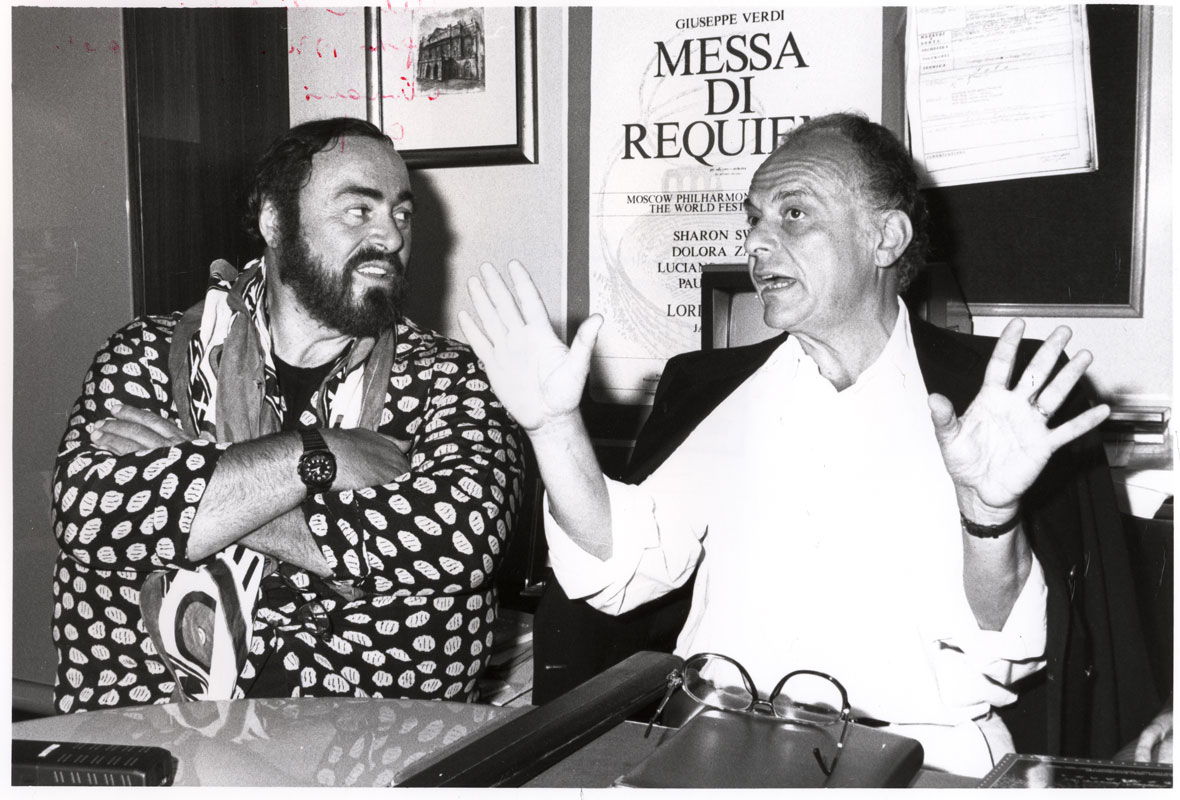


Arena


The first steps

Pavarotti probably had singing in his blood. Born in Modena, he took the first steps in his career in the city’s choir. It was his father, an opera fan and a tenor in the municipal theatre’s choir, who introduced him to music. The young Pavarotti’s musical ambitions were kindled when the choir won first prize in an international competition held in Llangollen, Wales. This was the motivation behind his decision to embrace the art – although he had studied to become a schoolteacher – and to take on the career of tenor, obviously to the great joy of his father, and with his full support.
He began his studies with Arrigo Pola and then with Ettore Campogalliani. The lessons were frequent and intense and Luciano often attended with his friend and study companion Mirella Freni.
Luciano Pavarotti’s first success came in 1961 when he won the International Competition, followed by his first performance in an important opera. He made his debut on 29th April that year, in Reggio Emilia, playing Rodolfo in La Bohème. A performance which drove the public and the critics wild and which was soon followed by appearances in other Italian theatres.
But 1961 was also the year of his first performance abroad, in La Traviata, with Virginia Zeani, in Belgrade. He then went on to work with Zeani again in 1963 in the Lucia di Lammermoor at Amsterdam. It was a lucky year for Luciano Pavarotti, as he found himself in roles in Vienna and Zurich and then in the part of Rodolfo again at the Royal Opera, in London’s Covent Garden, where he replaced an indisposed Giuseppe di Stefano. Still in the same year, he performed in Spain, Poland, Hungary and Czechoslovakia.
1965 was the year of his debut at the Scala theatre in Milano, led by the conductor Herbert von Karajan and sharing the stage with Mirella Freni.
In 1966 he returned to Milan to sing in Rigoletto, La Bohème, Verdi’s Requiem, conducted by von Karajan, and a new version of Bellini’s I Capuleti e i Montecchi, with conductor Claudio Abbado.
America and the metropolitan opera house
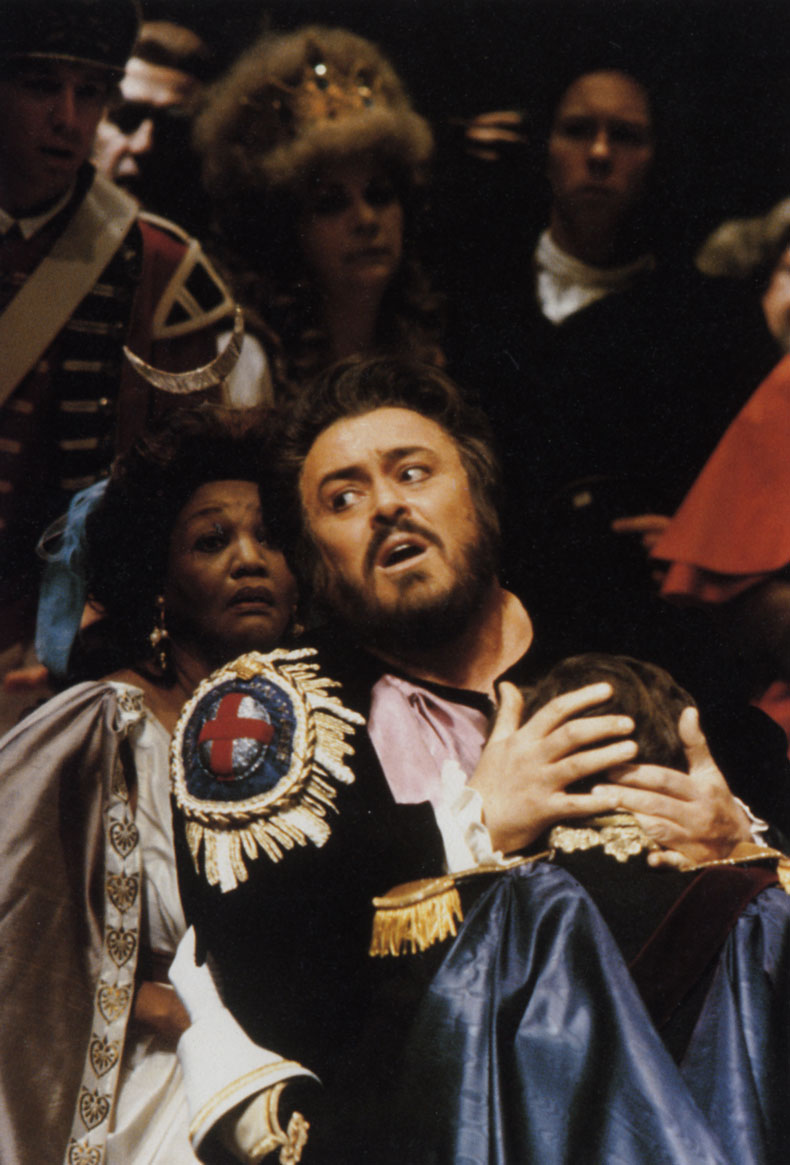
For the Americans of today “opera” is still synonymous with Luciano Pavarotti. Right from the beginning the United States welcomed the tenor with open arms and great enthusiasm. On the other side of the Atlantic, Luciano Pavarotti had become a symbol and an emblem of Italian culture and style. Appreciated for his splendid voice and his great personality, the tenor from Modena had fundamental influence in the strong and positive image of Italy that developed.
He debuted in the States in February 1965, in Miami, performing in Lucia di Lammermoor with Joan Sutherland, the famous Australian soprano who then invited him to accompany her on her six week tour of Australia. In 1967 Pavarotti went back to America, this time to debut at the Opera Theatre of San Francisco in La Bohème, with Mirella Freni, and he since returned there on numerous occasions, singing in Luisa Miller, Un ballo in maschera, Aida, La Gioconda, La favorita and Turandot.
It is with the Metropolitan Opera of New York that the tenor established a particularly special relation. This was the birthplace of the American “Pavarotti” phenomenon, and he celebrated the thirtieth anniversary of his debut in the Big Apple on 22nd November 1999 with a gala evening held there: in fact the tenor tread the boards at the Metropolitan Opera in the guise of Rodolfo for the first time in 1968, returning in 1970 for Lucia di Lammermoor, La Traviata and then again to play Rodolfo once more. So many of his performances were greatly appreciated by the public of the Metropolitan Opera, starting with his spectacular appearance on 17th February 1972 with Joan Sutherland in Donizetti’s The Daughter of the Regiment: when the tenor reached the end of the aria with the famous nine high Cs, the house exploded into a standing ovation to beat all others.
Le performance speciali in Italia
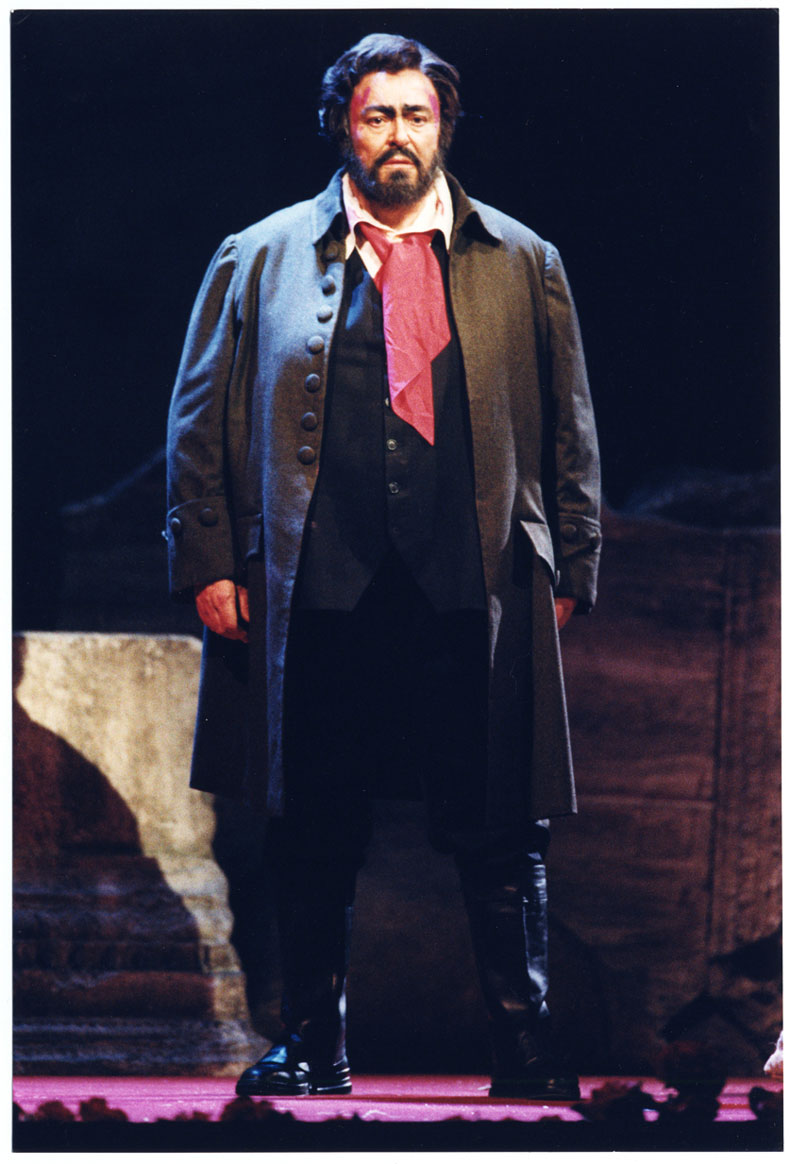
Luciano Pavarotti played the leading role in several important events and celebratory shows.
1967 was the year of the centenary celebrations for the birth of Arturo Toscanini, and the tenor was called upon to pay homage to the great conductor on two occasions: at the Scala theatre in Milan, conducted by Herbert von Karajan he performed in the Messa da Requiem by Giuseppe Verdi and then again at the Municipal Theatre of Florence, led by the conductor Claudio Abbado.
In 1973 he sang in a tribute to Enrico Caruso at the San Carlo theatre in Naples, conducted by Oliviero de Fabritiis.
In 1986, he sang in Aida to open the season at the Scala, giving such an extraordinary performance that at the end of the opera copies of the newspaper Il Corriere della Sera were handed out bearing the full-page headlines “Celeste Luciano” (Heavenly Luciano).
In 1996, he sang with Mirella Freni again in the centenary performance of La Bohème, held in Turin, the first city in the world in which the opera was performed. The celebrations were broadcast live all over Europe.
In 2000 he sang in the centenary of Tosca at the Rome Opera House (the same theatre that hosted the first performance of Puccini’s melodrama), which was conducted by Placido Domingo and directed by Franco Zeffirelli.
In the arenas and in open-air locations

The theatres were probably too small to house the masses of people who wanted to attend the Pavarotti’s performances. His appearances were sold out in the arenas such as Madison Square Garden in New York, Wembley stadium in London, the Olympic Stadium in Berlin, the Hollywood Bowl, the Olympic Stadium in Barcelona, the Roman Amphitheatre in Orange, Arena in Verona and many, many more. Enormous crowds had burst into applause, overcome with emotion and turning Pavarotti’s open air concerts into spectacular events.
To mention just a few examples, the tenor performed his magic on a public of 250,000, including their Royal Highnesses the Prince and Princess of Wales, in the open-air concert held in 1991 at Hyde Park in London. A show which became one of the most important media events ever. Broadcast live, it reached televisions in homes all over Europe and the United States. This was one of the biggest audiences Pavarotti brought together but then, in 1993, the success of the London event was reconfirmed and surpassed by another performance: this time the venue was New York’s Central Park, where 500,000 spectators came to see the concert. The event was broadcast in America by the PBS network and followed by millions of viewers in Europe.
The three tenors

Throughout his long career Luciano Pavarotti always searched for and experimented with new kinds of shows and ideas to make opera appreciated. Examples of his open attitude were the extraordinary The Three Tenors concerts with his colleagues José Carreras and Placido Domingo. Conducted by Zubin Mehta, the three artists performed on two occasions on the night before the World Cup finals, first in 1990 at the Terme di Caracalla in Rome, and then again in 1994 at the Dodger Stadium in Los Angeles. An incredible fusion of voices which received great acclaim on a world tour which took the three tenors, conducted by James Levine, to the United States, Japan and Europe.
The artistic fellowship continued into 1998 when the tenors gave a concert which was broadcast live by television networks the world over. The colleagues were also greeted by a sea of spectators when they performed in the Champs du Mars, at the foot of the Eiffel Tower, for the World Cup in Paris, and then again in Vienna for a special Christmas concert.
Television
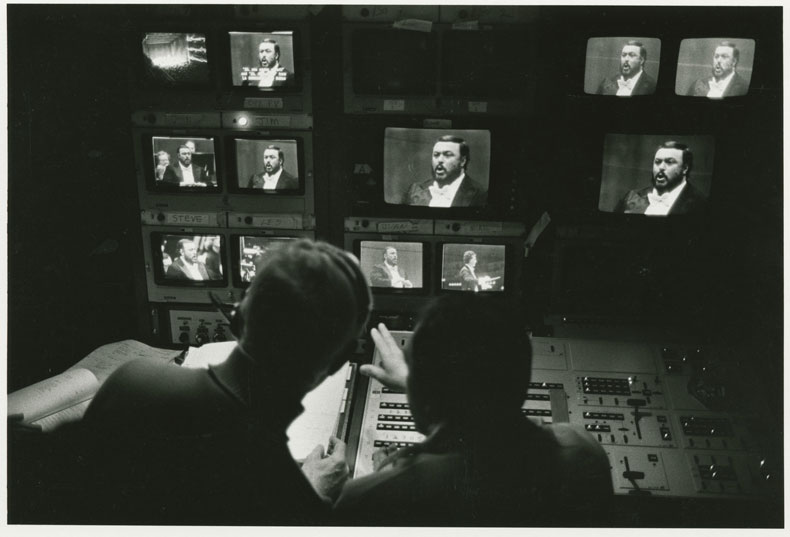
A great communicator and star of many media events, Luciano Pavarotti could not ignore the importance of television in his artistic career.
His first television performance dated back to 1958 (RAI, Tele Modena show), but his most important appearance was in March 1977, when he took on the role of Rodolfo in the television program broadcast live from the Metropolitan in New York for the first time ever. Next, he appeared on a number of editions of Live from the Met, with operas including I Lombardi, I Pagliacci, Andrea Chénier, Turandot, Aida and many more besides.
He used television to transmit his concerts throughout the world, from Europe and America, from San Francisco and the Philadelphia Opera Company. The production of Aida at the Scala was broadcast throughout Europe and in China his performance in La Bohème, was watched by as many as 250,000,000 television viewers.
The international voice competition

The great professionalism and the experience gained over the course of Luciano Pavarotti’s extensive career made him a valuable guide for the young talents embarking on a career in opera. On those occasions, the Maestro from Modena was always more than willing to give guidance and advice, drawing on his own experience, since he believed the future of opera lied in the hand of the coming generations. It was not uncommon to find him helping up-and-coming talents and even performing with young singers. Since 1982 he organized an international competition for young performers. On the 25th anniversary of the tenor’s career, the winners of the Italian version performed La Bohème in gala evenings in Modena and in Genoa and then, during Pavarotti’s historic visit, the winners performed in Peking. The Maestro held courses for students of the Peking conservatory and, at the end of the trip, he presented the first concert in China, in front of tens of thousands of people. The concert was held in the People’s Great Hall, and it was the first time that the venue had been used for a show. Lessons held by the Maestro Pavarotti at New York’s Juillard School were broadcast by the PBS television network.
Pavarotti and friends
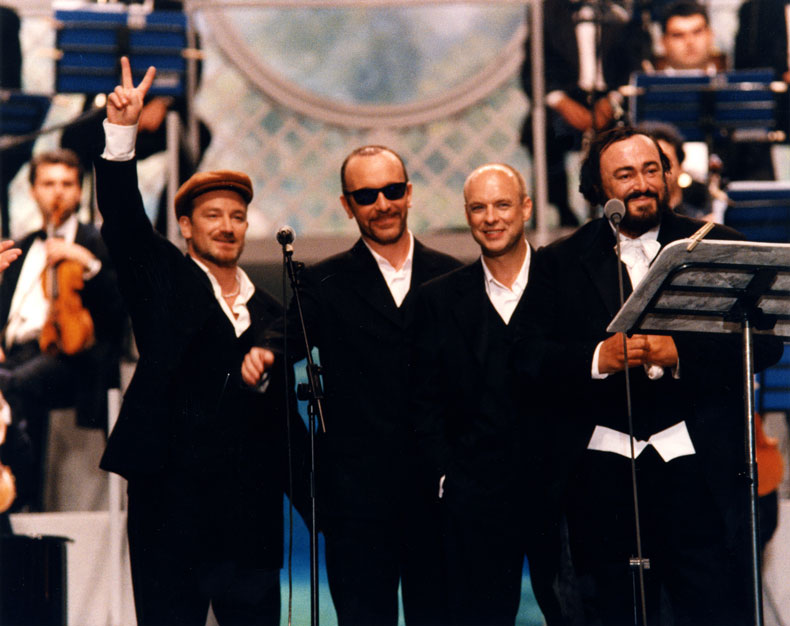
Fame and success didn’t lessen the tenor’s generosity or diminish his philanthropic qualities. He was the organiser of a number of charitable events in aid of children in need in various countries around the world.
From 1992 to 2003 Luciano Pavarotti produced a special event in his hometown: Pavarotti & Friends. The aim of the event, involving internationally renowned guest artists from the pop and rock world, was to collect money for international humanitarian organizations. Some very real examples of this commitment were the cultural and aid centres that have been built in Bosnia, Guatemala, Kosovo, Tibet, Cambodia and Angola.
During the ten editions of the event, Pavarotti sang with: Bryan Adams, Anastacia, Jon Bon Jovi, James Brown, George Benson, Bono e The Edge degli U2, Mariah Carey, Tracy Chapman, The Chieftains, Eric Clapton, Joe Cocker, Natalie Cole, The Corrs, Sheryl Crow, Lucio Dalla, Celine Dion, Brian Eno, Gloria Estefan, The Eurythmics, Bob Geldof, Enrique Iglesias, Elton John, Grace Jones, Tom Jones, BB King, Ricky Martin, John MacCluchlin, Meat Loaf, George Michael, Liza Minnelli, Laura Pausini, Eros Ramazzotti, Lionel Richie, Spice Girls, Sting, Barry White, Stevie Wonder e Zucchero.
With whom and where?
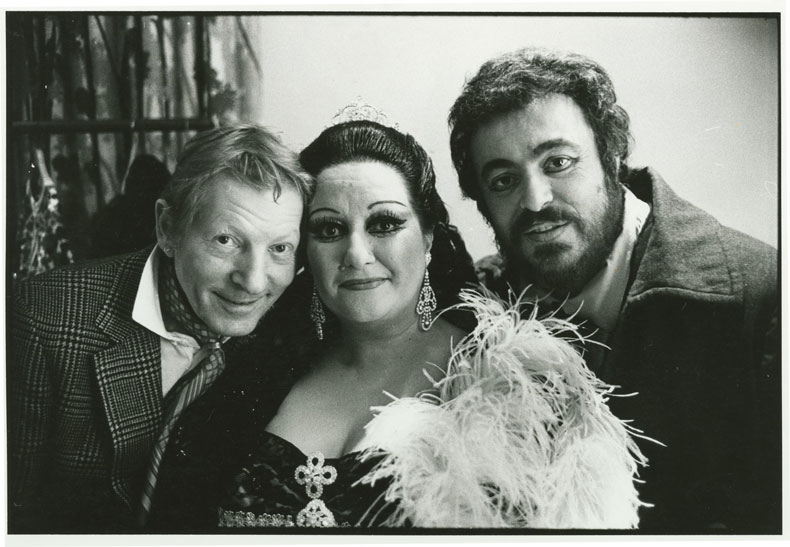
The number of artists Luciano Pavarotti worked with and the stages he performed on is almost inestimable. His tours took him to all the countries of Europe and the Americas, as well as the Far East, Australia, the Middle East and South Africa.
He worked with some of the most important conductors, from Tullio Serafin, who conducted him in some of his first performances of Rigoletto in Palermo, to Herbert von Karajan, Claudio Abbado, Carlo Maria Giulini, Sir George Solti, Carlos Kleiber, Leonard Bernstein, Lorin Maazel, Seiji Ozawa, Eugene Ormandy, Zubin Mehta, Riccardo Muti, James Levine, Gianandrea Gavazzeni, Daniel Barenboim, George Pretre, Oliviero de Fabritiis, Bruno Bartoletti, Emerson Buckley, Peter Maag, John Pritchard, Riccardo Chailly, Daniel Oren, Giuseppe Patanè, Francesco Molinari Pradelli, Richard Bonynge and many others.
He sung in the international ‘temples’ of opera like the Metropolitan Opera in New York, Vienna’s Staatsoper, the Scala theatre in Milano, the Royal Opera House in London’s Covent Garden, the Colón theatre in Buenos Aires, the Opèra in Paris, the theatres of San Francisco, Chicago, Berlin, Rome, Florence, Naples and many more the world over.
His colleagues included the most glorious stars of opera: Dame Joan Sutherland, Mirella Freni, Leontyne Price, Monserrat Caballè, Kiri Te Kanawa, Magda Olivero, Leonie Rysanek, Shirley Verrett, Fiorenza Cossotto, Sherrill Milnes, Robert Merril, Piero Cappuccili, Placido Domingo, Josè Carreras and many others.
International Awards
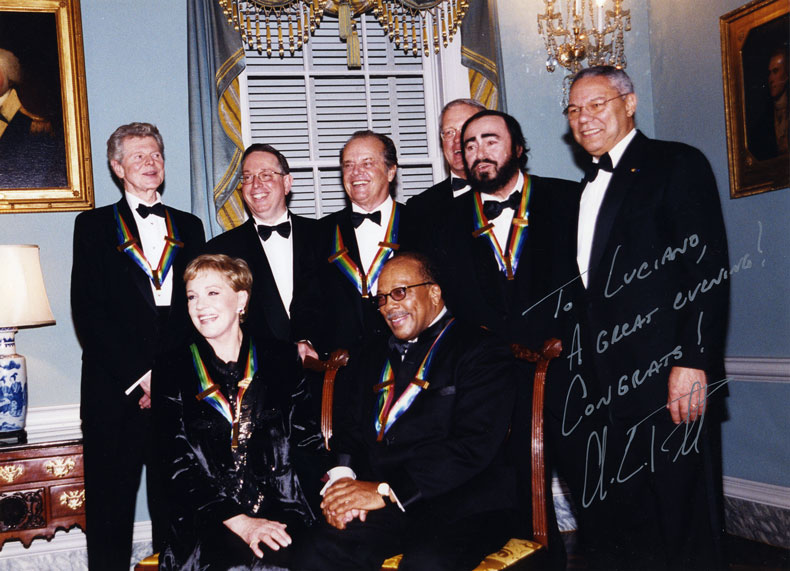
Luciano Pavarotti was awarded an enormous number of international accolades, including the Commendatore Cross and Grand Official Cross for services to the Italian Republic, numerous Emmy, Gramophone and Grammy Awards (including the 1998 Grammy “Legend Award”), Officer of the Légion d’Honneur, Musicares Person of the Year, Honorary degrees from the Philadelphia College of Performing Arts and the Universities of Pittsburgh, Oklahoma City, Parma, Urbino and San Martin Lima, Peru, the Ville de Paris Prize (awarded by Jacques Chirac), People’s Choice Award, Kammersänger (presented by the Austrian Minister of Culture). In 1998, to celebrate the tenor’s 30th anniversary at the Metropolitan Opera House, the Mayor of New York, Rudy Giuliani, proclaimed the “Luciano Pavarotti Day in New York”. Pavarotti was appointed a United Nations Messenger for Peace by Secretary General of the United Nations, Kofi Annan and, in 2001, the UNHCR (United Nations High Commission for Refugees) presented the tenor with the coveted Nansen Award in recognition of helping to raise more funds for the UN refugee agency than any other private individual. In November 2001, President Gorbachev presented Luciano Pavarotti with the World Social Award in Vienna and he was then presented with a Kennedy Center Honors Award. In 2004, he was presented with the Eisenhower Medal and given the highest honour of the Italian community of the USA: the induction into the Italian Hall of Fame by NIAF (National Italian American Foundation). On September 4, 2007, the Italian Minister of Culture presented Pavarotti with the “Excellency in Culture Award” for his huge contribution to the spread of Italian culture and art worldwide.
In March 2004, Luciano Pavarotti gave his final performance in staged opera at New York’s Metropolitan Opera House; his last performance before a huge audience it happened on the Occasion of the Opening Ceremony of the Winter Olympics in Turin, 2006.
Maestro Luciano Pavarotti passed away in his Modena’s house on September 6, 2007.



